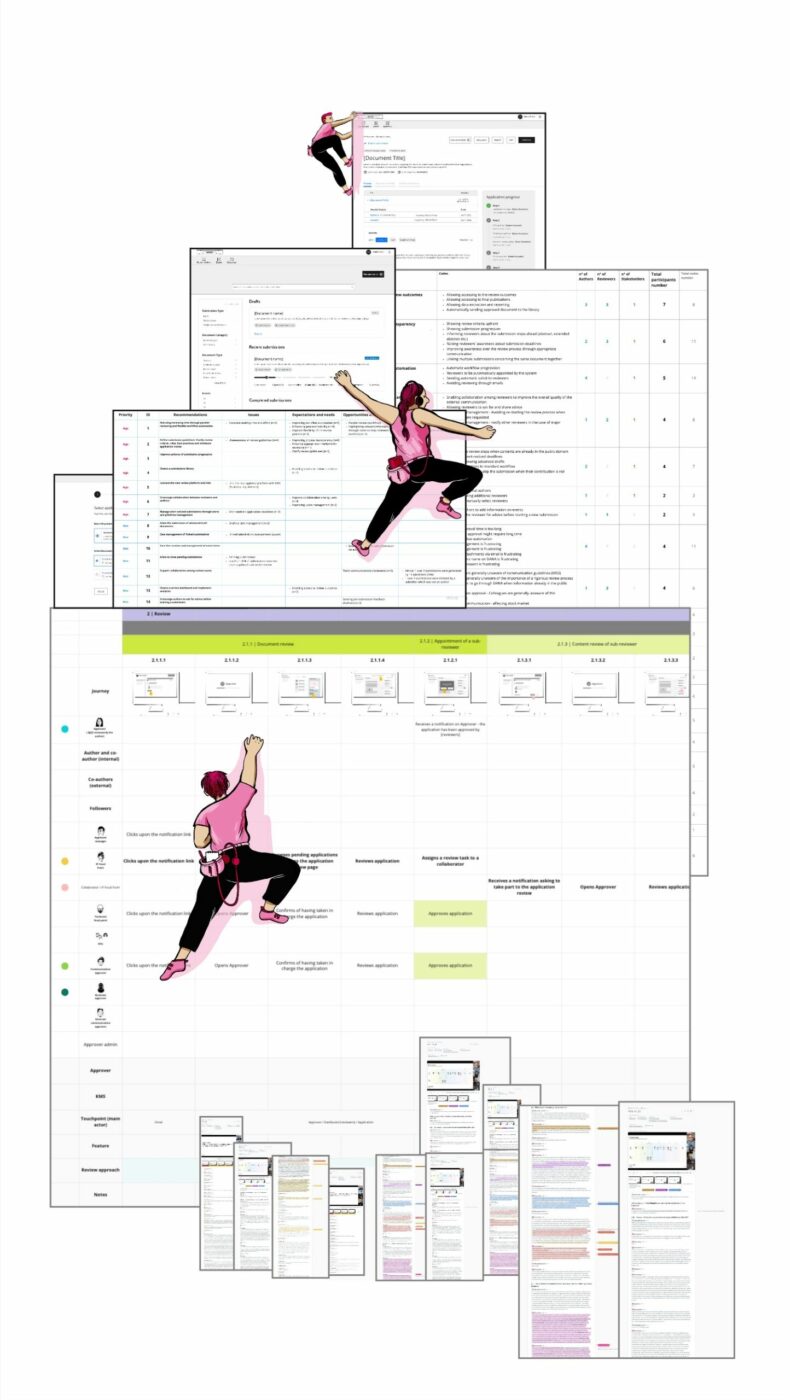Paper Pundit
PaperPundit is an internal peer-review service for researchers of a global energy organisation. I established the research and design approach alongside a multidisciplinary design team, helping stakeholders familiarise themselves with human-centred design, defined business goals, and coordinated the design and development work. The project resulted in a new service and a digital touchpoint that accelerates the dissemination of research, reduces review duration, and decreases submission errors.
This image has been partially blurred for reasons of confidentiality.
How can a leading energy organization improve the dissemination of its research through a more effective, collaborative, and human-centred peer review service?

Problem. The R&D department of a leading energy organization needed to create an internal review service to support the dissemination efforts of its researchers. When we started, the R&D department barely had an internal review platform. Researchers were generally left alone to understand how to comply with the dissemination policy, causing delays in the review process and frustration among authors and reviewers.
Approach. We partnered with the Knowledge Management (KM) unit to define a mixed-method design research strategy to inform the design and development of the new review service. I led the research and design team in conducting twelve in-depth interviews with users and stakeholders. Qualitative insights were triangulated by analysing the available audit data provided by the KM unit. Design recommendations were eventually articulated through user journeys and the design concept.
Solution. PaperPundit supportd researchers and reviewers throughout the review process. Workflow automation and a ‘parallel reviewing approach’ were created to reduce the overall reviewing time. Authors were provided with guidelines and information on review criteria to anticipate issues before starting the submission and with access to previous submissions. Reviewers received a summary of relevant application information and were alerted to short-notice submissions. Eventually, they could incorporate the collaborator’s work within the new review platform.
Impact. PaperPundit is expected to substantially reduce the average review duration and decrease submission errors, leading to a relevant acceleration in the dissemination of research.
A Quick Heads Up: The name ‘Utility Company’ is a cover, all in the name of an NDA. So, as you read through, know that these opinions are all mine.
Responsibilities
Activities
Project Details
Project highlights
Improved peer-review workflow
Implemented a parallel reviewing system coupled with peer-review workflow automation and improved tools to enhance collaboration between authors and reviewers.
It is expected to lead to a 30% reduction in the average review duration (based on audit data from 2022) and enhance collaboration among researchers.
Human-Centred Design
Utilised mixed-method research, synthesising qualitative interviews and quantitative data analysis, to uncover user behaviours and service gaps to inform the design guidelines.
Based on these insights, it is expected to lead to a 25% decrease in submission errors and a significant increase in user satisfaction with the new review platform.
Structured Handover for Agile Development
Translated the design concepts into concise user stories and a design backlog, ensuring a seamless transition from design to development with a clear roadmap for agile implementation.
With this approach, it is expected to lead to a relevant acceleration in the product development phase and a significant reduction in backlogged tasks.








